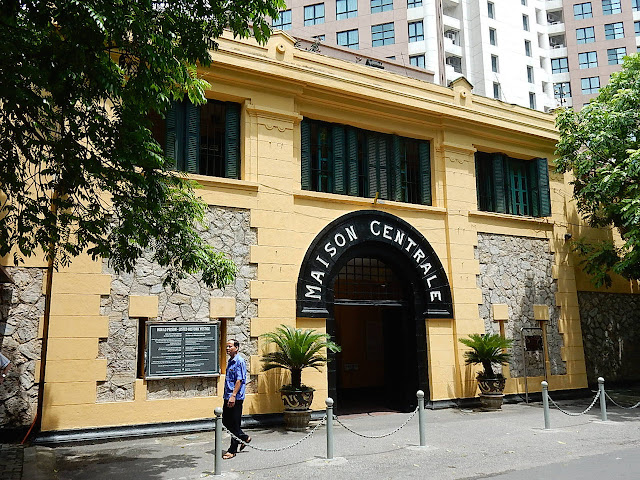Busy 36 Streets
Interestingly, Old Quarter is also known as the ‘36 Streets’ because of the famous streets that make up the place, all named for the type of goods or service they were originally known for. There are streets which are named for selling silk, shoes, jewelries etc. Some of these streets still retain their original purpose so do not be surprised when you come across streets with most or all stores selling similar stuff or service.Let explore most famous streets out of thirty-six to have a closer look at the Ha Noi Old Quarter.
Hang Bac
Bac means silver and till today, the street is still lined with silver shops, although some have expanded their wares to include jade bangles and other jewelleries. Although this is a street that is located near our hotel and we walked on it several times, we hardly patronise the jewellery shops here since we were not intending to buy any jewellery in Ha Noi.Besides jewelleries, the shops are also known as a good ‘unofficial’ place for money exchange. However, with recent crackdowns, this might be less easy nowadays. Hotels and travel agencies have become the ‘legal’ money exchangers now instead.
Cau Go Street
Cau Go Street is a commercial street specializing in women’s accessories, and is situated just beside the huge eatery building that houses Thai Express, City View Cafe and Highlands Coffee, just to name a few.Hang Be Street
In the mid-19 century, Hang Be street was the place where the craftsmen made bamboo rafts. Each raft consisted of 12 to 15 bamboo poles lashed by the bamboo bark. The bamboo poles were sold in Hang Tre street. Bamboo raft played an important role in the traveling and fishing of the residents because they could easily move through Ha Noi’s shallow river, swamps and lakes.Hang Dao Street
Hang Dao street is one of the main streets in the Old Quarter running from the north to the south, dividing the quarter into two halves. “Dao” refers to the pink peach blossoms, the symbol of Tet in Vietnam. At that time, there was a huge demanding for this color, so the street was named after that story. In the past, the street was a center for silk products. On the first and sixth days of lunar months, there were fairs that people tried to try silk products for French and Ha Noi local people. When there was a turn from 19th to 20th century, the street sold not only silk but also western clothing products. Nowadays, this street is specializing in ready-made clothes.Hang Mam Street
The name of Mam rooted from “fish sauces”, which is a kind of ingredients commonly used in Vietnam's dishes. The street was originally located on the riverside near the day’s catch. After the sauce was made, it was stored in barrels that were made on Hang Thung Street. From 1940, a ceramics industry including memorial stone etching, tombstone and coffin appeared and replaced the fish sauce business.Read more: 5 homestays to find peace in the heart of Ha Noi
Source Internet

















